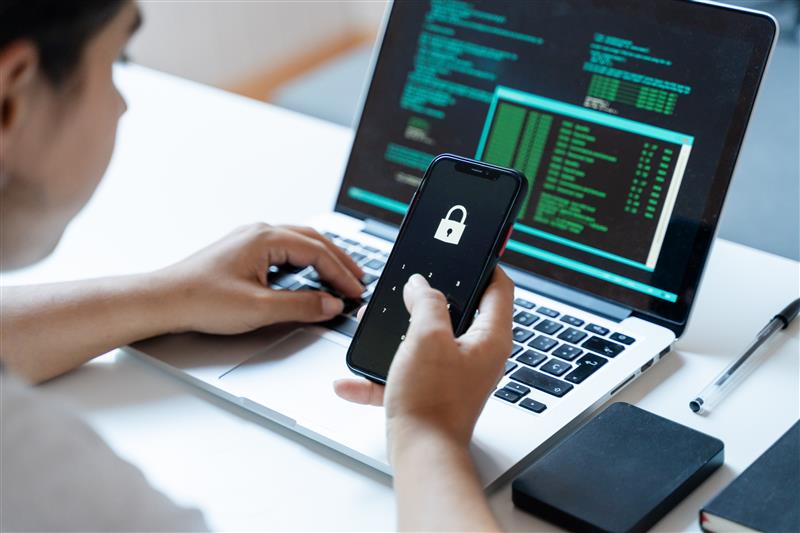What is PII and What Does PII Include?

Personally Identifiable Information (PII) is unique information that can be used to link to an individual’s identity. In some cases, stolen PII can help identity thieves fraudulently access someone else’s identity.
PII can include your full name, date of birth, and Social Security numbers (SSN)—which are nearly impossible to replace if they’re compromised. This is why Social Security number protection is crucial. There are many other forms of PII, such as documents and records, that are often overlooked.Knowing what is PII data and what does PII include can help slash your risk of identity theft. PII security is a very important part of identity protection.
Is PII a password?
Have you ever wondered, “What is PII?” No, it isn’t a password. It’s an acronym referring to personally identifiable information, and its definition varies from one person to another. Even states have differing opinions on how they define PII when it comes to data breach reporting laws.
What are examples of PII?
The most common risks include your driver's license and mother’s maiden name. Not everything needs to be routinely checked, but these examples of PII are worth protecting:
- Passports
- Citizenship papers
- Green cards
- Court records
- Actual SSA cards others use to commit fraud
- Email addresses
- Phone numbers
- Photos that could quickly identify you
- Handwriting samples
- Military and other ID cards
Is an IP Address PII?
Your IP address could be considered PII under certain circumstances. For example, the E.U. may recognize your IP address as PII depending on the situation, but in the U.S., the guidance is less clear. Some court cases have successfully argued that an IP address identifies a computer, not a person. Others have made the case that IP addresses are considered PII because of consumer privacy rights. Using a VPN to protect your privacy is a good way to mask your IP address.
What is not PII?
So, what is not considered PII? Basically, anonymous data that can’t be used to identify or track you. This can include your office phone number or where you work, your gender or religion, or any similar basic pieces of information. But beware—even this information in the wrong hands can help bad actors piece together details to create a clearer picture of who you are. Putting your data together like a puzzle can help them locate more of your PII.
Some PII data is tougher to secure
Even if you secure sensitive documents, you carry around another type of identifiable info that’s difficult to protect—your biometric features. These markers are increasingly used for identification and include iris patterns, fingerprints, your facial features and even your DNA. If given a choice, think twice before sharing these unique biological identifiers.
Health PII data hazards
Health care also churns out sensitive personally identifiable information—from diagnoses like HIV to medical insurance policy numbers. This data subset is known as Protected Health Information (PHI). Unsecured PHI can create plenty of opportunities for identity theft, but there is also a genuine risk to your physical well-being if that data is compromised, or your records get comingled with a thief's. HIV tests and other sensitive results should be locked down.
Medical ID theft is a significant issue because health care costs are high, and people without insurance get desperate. In these cases, you may already know your thief. Relatives, friends and guests in your home could have ready access to your medical ID card—it would be easy for them to snap a photo to grab your plan numbers. Untangling bills associated with this type of ID theft presents a genuine nightmare because consumers have fewer legal protections than with theft incidences like credit card abuse.
When a con artist successfully obtains care in your name, test results and other information usually lands in your health record, which can create risks during an emergency. For example, if your blood type is B-, you don't want O+ blood notations in your records. Or If the thief has no known allergies but you do, providers could be confused and potentially endanger your life.
Where PII data lives
Consider the many locations where these data points can be found. They include:
- Financial statements
- Tax returns
- Retirement files
- ID cards of all types
- Wallets
- The FBI massive databank
That last one is the bureau's Next Generation Identification (NGI) storehouse, which first launched in 2011. It stores all sorts of biometric data, along with other identifiable documentation. The bureau says that rapid searches of NGI help law enforcement with "on-scene access to a national repository of wants and warrants including the Immigration Violator File (IVF) of the National Crime Information Center (NCIC), convicted sex offenders, and known or appropriately suspected terrorists."
But even the most honest individuals should be concerned; many state and local agencies routinely share information with NGI. The fingerprint on your driver's license is one example. Imagine the headaches this could create if you become a victim of identity theft, and your data winds up in NGI.
How to be proactive about your PII data
Wondering how you can protect your PII data? Here are some steps you can take:
- Move to electronic files for financial matters—presuming your devices are well-protected.
- Periodically shred all documents with PII that you no longer need.
- Never carry SSN cards in your wallet. Substitute a photo on your smartphone.
- Store rarely used items in a safe deposit box.
Get extra help in monitoring your PII
You want to do whatever you can to keep from finding your identity on the dark web, which is why it’s important to keep an eye on your PII and correct all errors in your files ASAP. This includes court records, scams, and other evidence of identity crimes. You could do some of these tasks on your own, but they’re extremely time-consuming.
Here's how IDShield can help. With an IDShield Membership, you’ll get monitoring for such things as credit accounts, USPS change of address forms, bank account numbers, medical insurance details, payday loans, passports, email addresses, social media and a slew of other PII so you don't have to waste your precious time.
You'll get an immediate alert if we find any of your data lurking where it shouldn't. If your wallet's lost, we can alert all your creditors. Our licensed private investigators—a unique feature in the business—will help if a member experiences an identity theft event. Members have access to consultation and advice on identity-related issues or concerns.
Our specialists are available to offer more answers to the question, 'What does PII Mean?' As a bonus, you don’t have to be the victim of identity theft to take advantage of our consultation services. Contact us today to learn more about how IDShield can help you.
IDShield is a product of Pre-Paid Legal Services, Inc. d/b/a LegalShield (“LegalShield”). LegalShield provides access to identity theft protection and restoration services. For complete terms, coverage, and conditions, please see an identity theft plan. All Licensed Private Investigators are licensed in the state of Oklahoma. This is meant to provide general information and is not intended to provide legal advice, render an opinion, or provide any specific recommendations.



